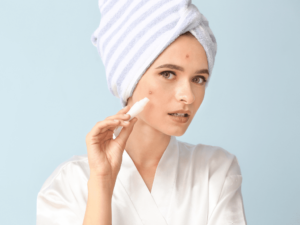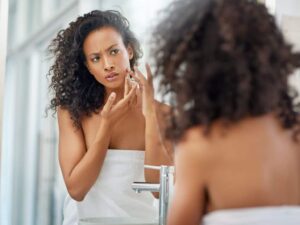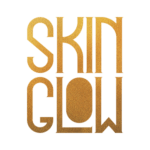
Skin conditions you can get from the gym
Even if it looks like a safe place to do your workouts, you must know there are a few skin conditions that you can get

Rosacea is a skin condition that mostly affects women, but some men can develop it too. Rosacea commonly appears on the face, especially if your skin tone is very light. Among the symptoms, you may spot redness on cheeks and nose, swelling, pimples with a yellowish liquid, and small blood vessels that are dilated. Unfortunately, there is no cure for it, but treatments can improve your appearance.
If you ask yourself how rosacea starts, you must know that even that this skin condition is very common, the cause is still unknown. However, some factors might influence its appearance, such as:
In a more aggressive state, mostly for men, rosacea comes with swollen red nose. Even if this condition is slightly linked with alcohol, not all those who have this condition are heavy drinkers, and some do no drink at all.
Unfortunately, there is no permanent treatment for rosacea. However, there are some procedures you can use to diminish the symptoms. So, if wondering what rosacea treatments work, you might consider mesotherapy, LED therapy, or microneedling.
Rosacea is a skin condition that requires special treatments, so seeing a skin care specialist or a dermatologist is highly recommended. He will examine those affected areas and give you personalized recommendations. At SkinGlow Clinic, we often see both men and women struggling with this disorder, and we can help diminish the redness and itch.
This skin condition is often misdiagnosed at home, so you need to see a specialist and not treat it after a few Google searches. Sometimes people confuse rosacea with acne, lupus, and some types of dermatitis. The treatment is not the same for all these conditions, so getting the diagnostic from a specialist is the first thing you need to do before applying any homemade remedies.

Rosacea usually affects women who are in their 30’s- 50’s. Some researchers connect this skin condition with family history, so if your parents developed it, there are chances that you will struggle with it too. Most people who have rosacea experience just a small redness that was never diagnosed or treated.
There are four types of rosacea, and one person can have at least one subtype.
As we previously mentioned, rosacea is not a curable skin condition, but proper treatment can help. Also, there are a few tips that can help you mask it.
Besides specialized treatment, wearing SPF protection every day with at least SPF 30 will make a difference. In our online shop, you can find the perfect UV sunblocks. If you are struggling with this condition, sunscreen that contains minerals is the most suitable for your skin.
They will provide ultra-sheer fluid protection, will enhance skin radiance and natural tone. The product must be applied 15 minutes before exposing yourself to the sun.
However, even if you are wearing face protection, avoid sun peak hours. If you need to go out during these periods, wear a hat or a cap for more protection.
If you are wondering if there is a specific diet, unfortunately, there is nothing you can add to your meals that will make it completely go away.
However, avoiding certain foods might help and decrease inflammations. Fish high in omega-3, eggs, peanut butter, or olive oil, foods that contain vitamin E (avocado, almonds, and nuts), antioxidants (all sorts of berries), or vitamin A (skim milk) can help.
Once you discover those ingredients that make your redness appear, try avoiding them.
If you easily blush and have fair skin, you might have rosacea, so using sunscreen is one of the major self-care things you can do to prevent this skin condition from developing. Reapply your sunblock from time to time if you want to make sure your skin will not be affected by UV rays. However, seeing a skincare specialist is the best way to prevent this unwanted skin disease from developing from an early stage.
Scrubs are NOT recommended for those who struggle with rosacea because they irritate your skin and make it look worse. Also, soaps and face gels with fragrances should not be used. Instead of these, use an emollient.
Several factors can trigger rosacea (see the ones listed above), but this depends from skin to skin. This is why you should keep track of every moment of outburst to know what to exclude from your lifestyle or diet.
Use topical preparations corticosteroids only if a doctor recommends them because they might worsen your problem in the long run.
Also, if you get blurry vision, you need to get it checked immediately by your GP, dermatologist, or an eye doctor.
Some drugs might aggravate your skin condition, so seeing a dermatologist or a skincare specialist before taking them is a must.
Rosacea should not be treated at home because you might wrongly diagnose this tricky skin condition. Many other skin problems look just like rosacea but require different treatments.
It must be diagnosticated by an experienced skin care specialist or a dermatologist, in a clean and safe environment. SkinGlow specialists can help you find the best personalized treatment for your condition.
Even if rosacea and lupus have similar symptoms, the two are very different. Both people with rosacea and lupus will experience face redness. However, when struggling with rosacea, pimples and bumps may occur. Also, ocular redness signs develop only for people with rosacea. These symptoms help doctors differentiate this skin conditions.
It is very important not to misdiagnose the two because they have different causes. Lupus is an autoimmune disease where your immune system attacks different organs or tissues. On the other hand, rosacea is a skin disease that happens for an unknown cause.
Rosacea is a skin condition that most of the time appears on your face. Depending on its form, the redness can extend to the chest, neck, and even ears.
It is highly important to treat this skin condition from the beginning because rosacea is not curable. Treatments can keep it under control, and this way, you will be able to avoid itchiness, redness, and swelling.

Even if it looks like a safe place to do your workouts, you must know there are a few skin conditions that you can get

Acne is a common skin disease affecting teenagers and older men and women from all over the world. However, even if it’s such a common

If you have acne-prone skin, we know it can be your worst enemy. Living in the city, with high levels of pollution and humidity can

Tel: 020 731 39 641
Monday – Friday:
10AM – 8PM
Saturday: 10AM – 7PM
Sunday: 10:30AM – 6PM
Terms & Conditions | Privacy Policy | Cookie Policy | Refunds & Returns
© 2024. All Right Reserved.
Web Design by SVO
Buy of minimum £250 products and get 5% discount